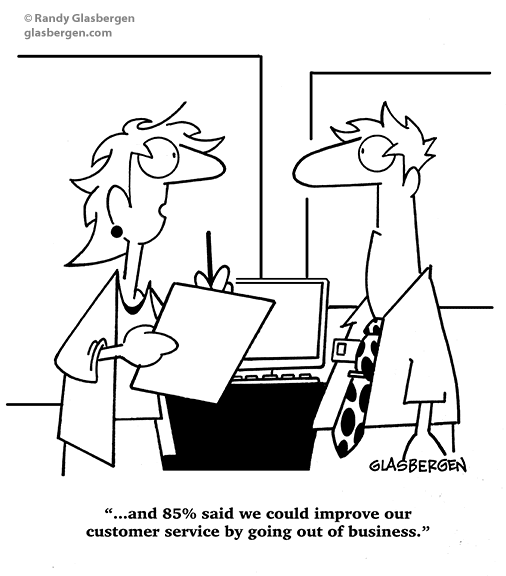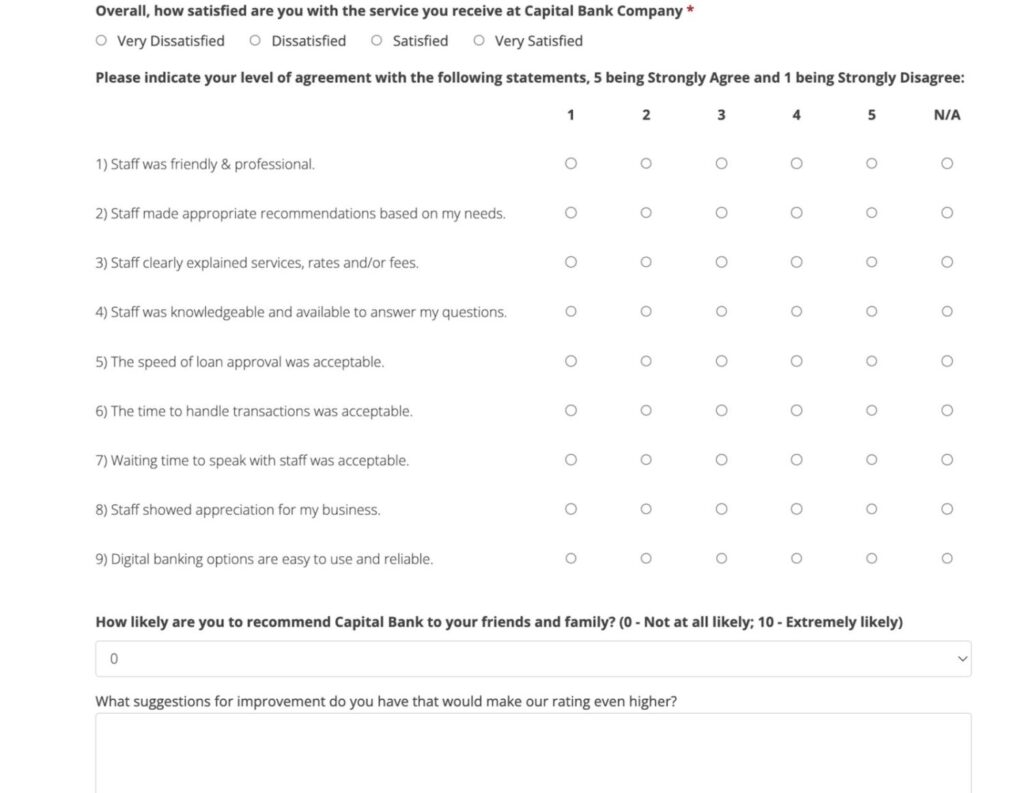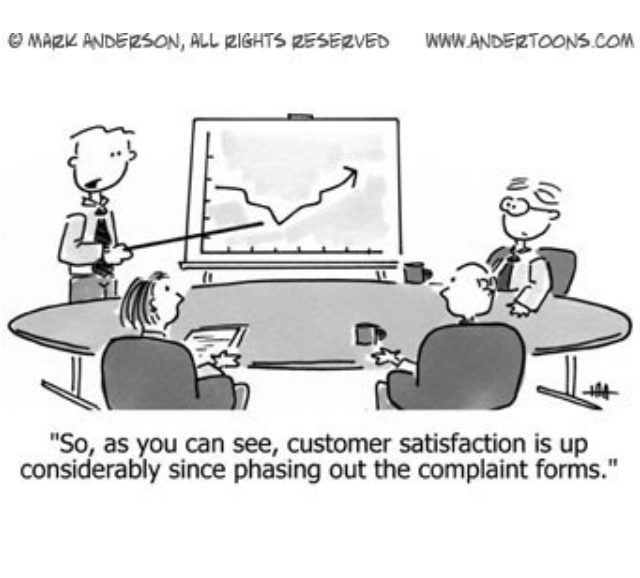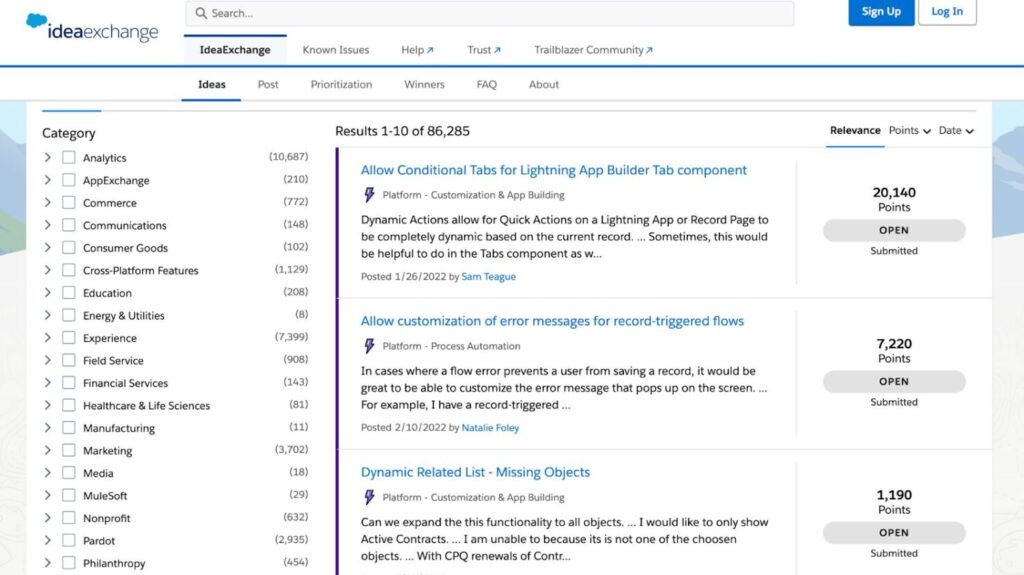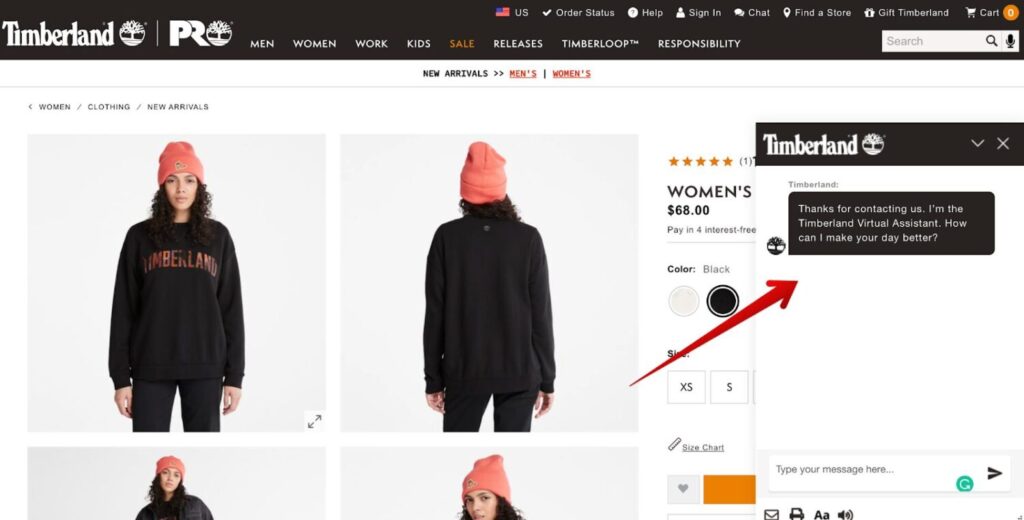Voice of Customer Data Analytics: What, Why, and How to Do It

Last updated on September 19, 2023
Voice of Customer (VoC) is not a new concept. It’s a strategy that many companies have used for years to understand and prioritize customer needs. However, how VoC data is collected, analyzed, and acted upon has changed.
Companies are finding that innovative technologies can make collecting voice of customer analytics more effortless than ever—and these technologies have opened up exciting new possibilities for improving customer experiences.
In this article, we’ll go over what Voice of Customer data analytics is and the different types. Plus, look at how to create a VoC strategy from scratch in five simple steps.
In This Article:
What is Voice of Customer Data Analytics?
Voice of Customer Analytics (often abbreviated as VoC) is a process of understanding the needs, motivations, and challenges customers face in their encounters with your business. It allows you to identify gaps in customer satisfaction and take corrective actions.
Collecting feedback from customers gives you powerful data to improve performance, making it one of the most valuable and cost-effective business tools. But you have to do more than listen. You must understand their needs and motivations.
VoC analytics improves products, services, and processes to meet consumer expectations better.
You can apply the data to every part of the customer experience. Think marketing, sales, service, and support.
To use VoC correctly, you need to listen and identify customer needs, then take action and repeat.
For example, a business insurance company can use VoC analytics to determine which industries they should target. They can do this based on the feedback they get in a survey asking email subscribers which one they work in.
You can also use VoC to understand your customers’ pain points, then address them by providing valuable content.
For example, a personal injury law firm could survey current clients to determine which topics they were most confused about, making them seek professional help. Say the most popular answer was, ‘What is the response time to expect when I send a demand letter?’—they could then write an informative blog post or create helpful social media content to attract more potential clients.
Types of Voice of Customer Analytics
The type of Voice of Customer analytics you’ll use depends on your audience and the questions you want to answer.
Getting Started
There’s a variety of survey tools you can take advantage of, like the one we offer at Lumoa.
Lumoa is a customer experience analytics platform that lets you look at customer data in real-time so you can make better decisions for your business. Its automation technology takes the time-consuming manual work out of collecting, analyzing, and implementing VoC data.
As a result, you can prioritize closing the loop with customers as soon as possible.
If you decide to move forward with Lumoa, the platform also helps you see data from all of your customer feedback channels, whether that is from surveys, phone calls, chat conversions, or online reviews.
It essentially gives you a bird’s eye view of what your customers are saying about your business which is the most valuable data a company can look at to improve.
Customer Surveys
You need to listen first to gain insights into your customer’s experience.
These one-off surveys provide more comprehensive insights into how customers feel about their experience with a brand.
They tend to be longer than other VoC gathering methods and may require participants to spend more time answering questions. Like “what was your favorite part about using this product?” and “how likely would you recommend this product to someone else?”
For example, take a look at this customer satisfaction survey from Capital Bank:
They’re asking for more than a simple five-star review and identifying specific areas on which they want to receive feedback—such as how long it took to handle transactions and the usability of the digital banking options.
There’s also a free space for customers to leave their own suggestions at the bottom.
You can collect VoC data through surveys like Capital Bank’s, social media monitoring, customer service interactions, or other qualitative sources.
You can also use quantitative data such as website analytics or app usage patterns. Combining both types of information gives you a complete picture of how your customers feel about your business and its products more than a single method.
For banking and telecommunication companies, customer surveys will likely be your largest pool of customer feedback. Most of the interactions customers have with you are either…
- On your website or mobile app
- On the phone with a customer service representative,
This is why surveys that pop up on-screen while a customer is using your product work so well for brands like Capital Bank–it could very well be the only time they interact with the customer after their purchase.
For telecom brands, you can also take this a step further by asking your customer service team to call existing or past customers to conduct surveys for feedback. Record these calls (with the consent of the customer, of course) and review them later to analyze the results and implement the feedback.
Listen to what they say about your products or services and how they talk about their experience with you. Also, pay attention to what they don’t say. For example, negative expressions like “I hate how long it takes for…”.
Then identify the customer needs that are important to them. These could be:
- Functional (i.e., better mobile app)
- Emotional (i.e., friendly staff)
- Status-related (i.e., feeling like VIPs)
Once you’ve identified these needs, prioritize them based on their impact on business outcomes such as sales revenue growth or market share.
Direct Customer Feedback
To gain a deeper understanding of customer needs, you must collect feedback from every touch point in the journey.
Direct feedback is a simple form of VoC that relies on an ongoing conversation between customers and your company.
It can be a suggestion box, an email address or phone number, or even social media channels like Facebook Messenger or Twitter direct messages (DMs).
Establishing a process for collecting feedback is important, then using it as a conduit for continuous improvement. A successful feedback program allows for ongoing conversations about emerging themes and emerging trends. In the same way, be sure to regularly discuss successes, challenges, and lessons with team members.
Always note that feedback is a two-way conversation between you and your customers.
As you start out building your voice of customer analytics program, keep these tips in mind:
- Feedback should be an ongoing dialogue, not a one-time event
- The goal of collecting feedback is to improve products/services/processes continuously
Salesforce is a prime example of customer feedback done right.
Salesforce created IdeaExchange, a forum where they can collect feedback and review suggestions made by their customers.
Image Source
Their product development team monitored the forum and reviewed customer suggestions, implementing those that had widespread support, which was demonstrated by the number of votes the entry received.
After taking action on a suggestion, they thanked the original customer who made the entry.
Social Media Analytics
Most social media platforms offer analytics tools to help brands track mentions by geography, sentiment analysis (positive vs. negative), sentiment comparison over time or against competitors, and more.
These tools then help you understand what your followers say online about you.
You can also look at your website analytics. Pay attention to KPIs (key performance indicators) like social shares to figure out which web pages and blog posts your readers engage with the most and bounce rate to pinpoint which needs a better user experience.
Not only will your VoC strategy benefit from these insights, but also your SEO strategy.
Social media is a customer feedback goldmine for retail companies in particular. This is because unlike other industries like banking, your target audience likely already follows their favorite brands on social platforms.
According to DataReportal, 75% of people use social media to research products as of 2022.
Keep a close eye on your tags, mentions, and direct messages—these will be your prime sources for collecting feedback.
Why You Should Use Voice of Customer Analytics
Voice of Customer analytics can help you improve customer experience and make better business decisions by collecting a large amount of data on how customers use products or services.
It helps you understand how customers think, what they want and how to improve products, services, and processes.
It’s especially important as a telecommunications, retail, or banking brand, as you deal heavily with customer service.
The key is to identify trends, patterns, and relationships in your data that lead to actionable insights.
Insights like why customers are buying your product or service by helping you answer the following questions:
- How can I make my product better?
- How can I improve customer experience?
- How do I convert more leads into sales?
Or you could provide exceptional customer service as this company did….
Image Source
How to Build a Voice of Customer Strategy and Program
Understand the Problem/Question Before Solving it
One of the most common mistakes people make when they start a Voice of Customer program is assuming they know exactly which problems need solving and how they can be fixed.
Before you begin to solve a problem, it’s important to define what the problem is. Pinpoint the exact problem you hope to solve through VoC data.
You may be tempted to use other organizations’ programs as inspiration or guidance for yours, but don’t feel pressured into copying them wholesale.
Your unique circumstances require unique solutions and methods. One organization might have more resources, another might have different values, and another might have different cultural norms and expectations about how things should be done within their business environment.
As such, you must define what success looks like before you begin building out any part of your program.
Answer the following questions:
- What do you hope to accomplish?
- Which parts of your business/product need the most improvement?
- What do you want customers to start saying about you instead?
A prime example of this is the retail brand Timberland.
Their former Brand President revealed that in the first few years, the brand didn’t have a way for customers to share feedback or provide suggestions. On top of that, they had no real core values or mission statement, resulting in years of failed marketing campaigns.
They broke this cycle by asking for feedback from 18,000 customers. And after reviewing the results, they decided to add a review option on each page as well as a live chat feature.
In the end, these actions made tracking product performance astoundingly easier.
Gather Data About the Problem/Question
You can gather data to help you understand the problem in various ways, the most common being the three we discussed earlier. Of course, the most direct method is to ask customers directly by conducting surveys and interviews.
You can also use indirect methods, such as analyzing social media conversations about your brand or customer service data (e.g., recording calls). For example, call center representatives who interact with customers may have the opportunity to record their interactions later.
Similarly, you might review customer support calls where the caller couldn’t resolve the issue without assistance from someone else within your organization (such as a supervisor or department head).
Finally, you can review feedback forms that customers fill out online or through physical mailings or email campaigns.
These forms often request specific information about what they liked and disliked about certain products/services you provided and any suggestions they might have for improvement.
If you are running an email campaign, you will need to invest in a good email marketing tool. Narrowing down on the right platform will depend heavily on what type of business you run. For example, Klaviyo is an email marketing service geared towards eCommerce brands.
However, researching Klaviyo alternatives would make more sense if you run a service-based business.
If possible, it’s helpful if multiple data sources are being used simultaneously so that patterns emerge across different types of sources rather than just one. This helps ensure accuracy while guaranteeing all available information has been collected before moving on to step three, which involves creating hypotheses based on the results.
To summarize: the ways to gather data can be put into two main categories- indirect and direct methods.
A direct method would be running an email campaign that asks for feedback from customers and an indirect method would be using data from company experience (such as social media conversions or customer service data).
Synthesize Voice of Customer Feedback Through Analytics and Insights
Analyze that data for insights regarding what, why, and how customers are experiencing your product or service in today’s marketplace.
Analytics and insights are the foundation of a successful VoC program. Analytics provide the raw data that shape the customer experience, while insights help you understand what is driving your customers’ behavior.
The first step in this process is to identify what metrics you should use to measure how your business is doing. You should then track these metrics and analyze them to identify trends that support or refute hypotheses about what drives customer satisfaction.
For example, if you hypothesize that better product design leads to higher customer satisfaction with your products, tracking and analyzing performance across multiple dimensions will help you find evidence for or against this hypothesis.
You may discover that improving one aspect of product design doesn’t lead customers to rate it more highly overall but does lead them to recommend purchasing it more often than other similar products on the market—which would be an indication that improving one dimension of product design could improve overall brand loyalty (and therefore profitability).
Create an Action Plan Based on Insights to Improve Customer Satisfaction
Next comes creating actionable insights from those analytics by asking “why” questions until there’s nothing left but answers. Which in turn, can be used directly as guides for decision-making within your organization:
- Why do our salespeople have trouble reaching their quotas?
- Why are certain features not being used?
- Why do only 20% of our customers respond positively when asked about our social media presence?
As you can identify and understand your customers’ key issues, concerns, and frustrations, you can begin to form strategies for how to solve them.
For example, suppose you were to learn that a common difficulty for your customers is finding information about how your company works.
In that case, it may be useful to create better internal communication tools or handouts that explain how you operate.
If many people mention the price of your products being too high or low quality compared with competitors’, then perhaps there’s an opportunity to improve both factors.
Letting this all sink in while drafting an action plan will help ensure that when you’re ready to start implementing changes based on what you’ve learned from VoC research, it will be as effective as possible, and more importantly, will lead to an increase in profits.
Share your action plan with the participating customers
To close the loop with your customers, regularly share findings from VoC analysis with them. They need to know that you value their feedback and are actively working to improve their experience.
Plus, it allows them to reflect on their own needs, values, and expectations by prompting questions like:
- What were their expectations when they first started using a product or service?
- How did those expectations match up against reality?
- What did they learn along the way that might help them in the future?
Conclusion
Voice of Customer data will make a powerful addition to your arsenal. There are many ways to get started with it, regardless of the business you run or the industry you work in. With this knowledge, you can make better decisions about what customers want and where your product needs improvement.
